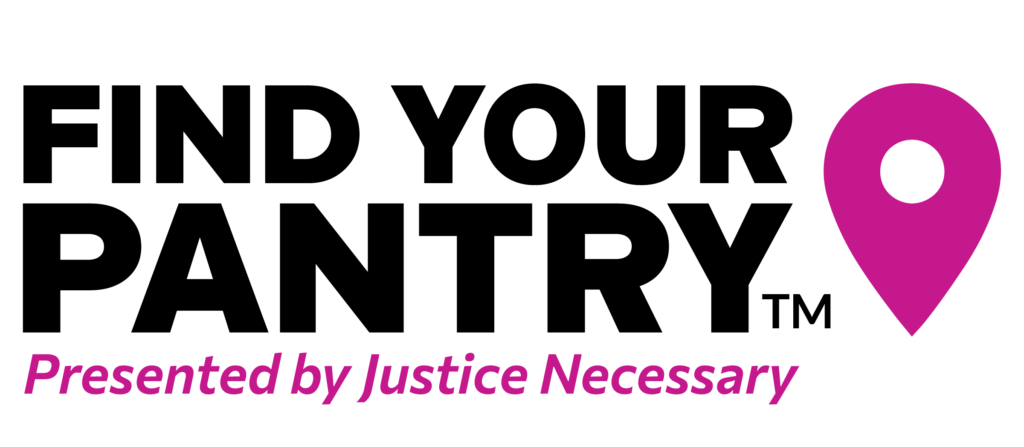2024 Study on Women’s Period Poverty, Diaper Need, and Hygiene Poverty
Executive Summary
In 2024, Justice Necessary once again commissioned a study of 1,256 Colorado women under the same conditions as our 2022 study. By maintaining consistent methodology, we can directly compare the data and better understand how access to period and childcare products, as well as other hygiene basics, has evolved over time. This approach allows us to track progress, identify persistent challenges, and adapt our efforts to create meaningful change across Colorado.
0%
Period Poverty
53% of women who menstruate report period poverty — a 10% increase from the 2022 Study on Women’s Period Poverty, Diaper Need, and Hygiene Poverty.
0%
Diaper Need
68% of women with children in diapers face diaper need, reflecting a surge of almost 19% from the 2022 Study on Women’s Period Poverty, Diaper Need, and Hygiene Poverty.
0%
Hygiene Poverty
66% of women with children struggle to afford basic hygiene items, showing a 10% increase in hygiene poverty since the 2022 Study on Women’s Period Poverty, Diaper Need, and Hygiene Poverty.
These findings underscore the deepening inequities in our communities and the urgent need for action. Justice Necessary is more determined than ever to address these systemic issues by expanding resource access, advocating for impactful policies, and ensuring that every Coloradan has the support they need to live with dignity. This study serves as both a reflection of the current reality and a powerful call to action, demanding a collective effort to create meaningful change
In response, Justice Necessary created Find Your Pantry, a tool that connects individuals with nearby organizations offering essential hygiene products—including period supplies, diapers, toiletries, and cleaning items—by simply entering their zip code.
Find Your Pantry also serves as a resource hub, helping individuals locate hygiene essentials while allowing donors and volunteers to connect with local agencies in need of products, financial support, or assistance. This ensures contributions directly support community priorities and helps more people access the essentials they need to live with dignity.
Jump to Section:
For Media Inquiries:
Jump to Section:
For Media Inquiries:
Period Poverty
Who Is Impacted by Period Poverty
0%
53%
of women in Colorado currently struggle with period poverty
57%
of mothers report difficulty affording period products
77%
of Native American, Indian, or Alaskan Native/Inuit women face period poverty
61%
of Black or African American women struggle to purchase period products
increase of women who struggle with period poverty since 2022
0%
Period Products Used During Menstrual Cycle
Tampons and pads are the most frequently used menstrual products among women experiencing menstruation.
71%
Tampons
71%
Pads
18%
Period Underwear
12%
Menstrual Cups
5%
Other reusable options
Unexpected Periods and Access to Products
When women get their period in public without having access to period products, they often resort to substitute items, purchase expensive products on the spot, or leave work or school to go home and access supplies.
have started their period in a public place without access to period products
0%
Use of Substitute Products and Extended Use
Substituting period products with items like toilet paper, paper towels, or other makeshift materials is not only ineffective but can also lead to serious health risks, such as irritation or infection, while also compounding feelings of shame and frustration.
have used substitute products, a 26% increase since 2022
0%
Barriers to Accessing Period Products
Access to period products remains a significant challenge, with barriers extending beyond financial constraints. In 2024, the lack of awareness about available resources and transportation issues emerged as the most critical obstacles. Compounding the problem, restrictions on programs like SNAP and WIC prevent them from covering these essential items. Alarmingly, more women now face difficulties accessing period products compared to the Colorado 2022 Women’s Study on Period Poverty, Diaper Need, and Hygiene Poverty, highlighting an urgent and growing gap in support.
The Supplemental Nutrition Assistance Program (SNAP) does not cover the cost of period products, yet a woman needs approximately 330 products annually, which can cost up to $1,800 a year.
Without access to these essentials, it becomes difficult to work, attend school, and participate fully in daily life, creating significant barriers to dignity and opportunity.
Over the past two years, Colorado has seen a significant 10% increase in women’s ability to access essential period products.
Received period products from an agency in the last 12 months
0%
Lack of access to period products harms mental health
Lack of access to period products results in a decline in women’s mental health and confidence. There has also been an increase in the number of women who adjust their schedule or perform worse at work because they lack access to period products since the Colorado 2022 Women’s Study on Period Poverty, Diaper Need, and Hygiene Study.
Those who are Native American, Indian, or Alaskan Native/Inuit (71%) are more likely to say that their mental health has suffered than those who are Black or African American (48%).
What emotions do women feel when they're unable to get period products?
The inability to access period products continues to take a toll on mental health and confidence, leading to a range of negative emotions. Since the Colorado 2022 Women’s Study on Period Poverty, Diaper Need, and Hygiene, feelings of embarrassment and shame have notably increased.
"Period products should be free to anyone who menstruates, we don't choose to have periods."
Survey Respondent
Feelings When Unable to Purchase or Access Period Products
Effect on Daily Life and Activities
Women experiencing period poverty are more likely to alter their schedules or struggle to perform effectively in daily activities, education, or work.
Events Skipped or Missed in last 12 months Due to Period
Reasons Something Was Skipped or Missed Due to Period
Resources Used For Information About Menstrual Cycle and Period Products
Over two in five women are aware of period poverty as an issue impacting people in their state. Over half know someone who struggles to afford period products, a significant increase compared to the Colorado 2022 Women’s Study on Period Poverty, Diaper Need, and Hygiene Study.
Of women say they are aware of period poverty as an issue impacting people in their state
0%
Of women say they know someone who struggles to afford period products
0%
There is strong agreement among women that there should be more public awareness, as well as government assistance, to support people who struggle to afford period products
Respondents who agree or strongly agree
Unpacking the Crisis: The Impact of Diaper Need
Diaper need affects two-thirds of parents with young children, creating a significant financial and emotional burden. For many families, affording diapers is a daily struggle, leading them to seek help from families, friends, or community organizations. This has forced parents to resort to desperate measures, such as reducing diaper use or relying on unsafe reusable options. This study delves into the realities of diaper need, highlighting its widespread impact and the urgent need for solutions.
Who Experiences Diaper Need
0%
68% of parents with young children experience diaper need, largely because government assistance programs like SNAP (Supplemental Nutrition Assistance Program) and WIC (Women, Infants, and Children) do not cover the cost of diapers, leaving families to struggle with this essential expense.
11%
increase in the number of women with children who experience diaper need since 2022
22%
of those with incomes below $25,000 stuggle with diaper need
27%
of those who are 23-34 struggle with diaper need
22%
of those who identify as Hispanic/Latino struggle with diaper need
Of those who have children in diapers struggle with diaper need
0%
Two thirds of mothers feel they do not have enough diapers to change their children as often as they would like, a significant increase compared to the Colorado 2022 Women’s Study on Period Poverty, Diaper Need, and Hygiene Study.
Have Felt They Don’t Have Enough Diapers to Change Their Child(ren)
0%
Over six in ten borrow money from family or friends to buy new diapers, but an increasing number of people receive diapers from agencies and other organizations.
What Respondents Do When They Don't Have Enough Diapers
Not being able to purchase through SNAP or WIC is the biggest barrier in getting diaper products, followed by being unaware of agencies
Barriers Experienced to Getting Diaper Products Other Than a Lack of Income/Funds
Those who are aware of agencies tend to receive diaper products from religious organizations, food banks, or food pantries
Agencies Respondents Received Diaper Products From
How does diaper need affect parents and children?
The inability to access essential diaper products leaves many parents grappling with increased worry for their children’s well-being and undermines their confidence in their ability to be good parents. This emotional strain impacts both parent and child, highlighting the urgent need for support and solutions.
Ways Affected By Not Being Able to Access Diaper Products
What emotions do parents experiencing diaper need report feeling?
Mothers facing diaper need often report overwhelming emotions, including stress, frustration, and deep disappointment, as they struggle to meet their children’s basic needs. This emotional burden underscores the profound impact of diaper need on families.
Feelings When Unable to Purchase Diaper Products
There is strong agreement among mothers that there should be more government assistance and more awareness to support people who struggle to afford diaper products.
Since the Colorado 2022 Women’s Study on Period Poverty, Diaper Need, and Hygiene, there has been a significant increase in support for diaper products. Among mothers, there is strong agreement that more government assistance is needed to help families struggling to access diapers. This growing consensus underscores the urgent need to address diaper need as a fundamental issue for family well-being.
Percentage of mothers who agree or strongly agree
The Hidden Crisis: Hygiene Poverty in Colorado
Hygiene poverty – the inability to afford essential hygiene products – is a pervasive and overlooked issue, deeply affecting the health, dignity, and well-being of women across Colorado. Many women struggle to afford basic necessities like household cleaning products and laundry detergent, challenges often worsened by barriers such as limited transportation and a lack of awareness about available resources. Alarmingly six in ten women depend on safety net programs like SNAP, which exclude hygiene essentials, leaving critical gaps in support. This study sheds light on the far-reaching impacts of hygiene poverty and underscores the urgent need for policy reform and community-driven solutions to ensure equitable access to these basic essentials.
0%
66% of women in Colorado experience hygiene poverty, struggling to afford basic hygiene essentials.
Two in three women experience hygiene poverty, with household cleaning products and laundry detergent being the most common items women struggle to afford.
“It’s hard to go in public when I am or feel dirty and not having access to feminine products sometimes. Or when I need clean clothes but have no detergent.”
Survey Respondent
Struggle with hygiene poverty
0%
Six in ten women now rely on at least one safety net program to meet their basic needs - a stark reflection of the widening gap in access to essentials.
Most notably, participation in SNAP has surged 16 percentage points since the Colorado 2022 Women’s Study on Period Poverty, Diaper Need, and Hygiene Poverty, underscoring the increasing financial strain on families. This dramatic rise highlights the urgent need for systemic changes to address the critical gaps in support for hygiene essentials.
Participation in Safety Net Programs
Footnotes
- ^ PlushCare Content Team, Cost of Having Your Period in Every Country and U.S. State, PlushCare, published September 10, 2024, accessed October 6, 2024, https://plushcare.com/blog/cost-of-your-period/.
- ^ Natasha Khan, Higher Prices on Tampons, Pads Prompt Hard Choices for Americans: Sales Fall for Feminine Hygiene Products as Women Try to Make Do with Less, The Wall Street Journal, published July 22, 2024, accessed October 6, 2024, https://www.wsj.com/business/tampons-pads-price-hikes-de3f3045?mod=business_lead_pos3.
- ^ Errol Schweizer, Why Your Groceries Are Still So Expensive, Forbes, published August 20, 2024, accessed October 5, 2024, www.forbes.com/sites/errolschweizer/2024/02/07/why-your-groceries-are-still-so-expensive/.

